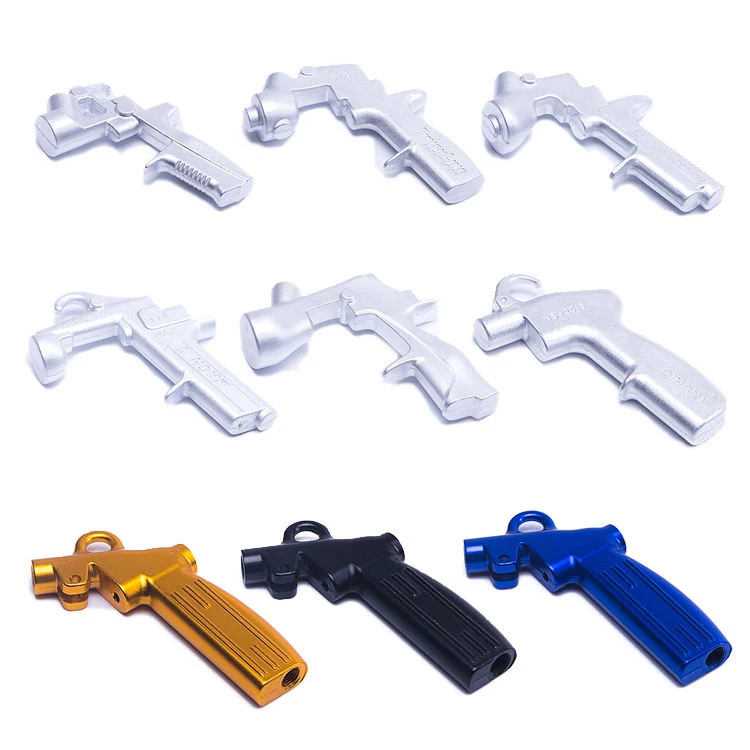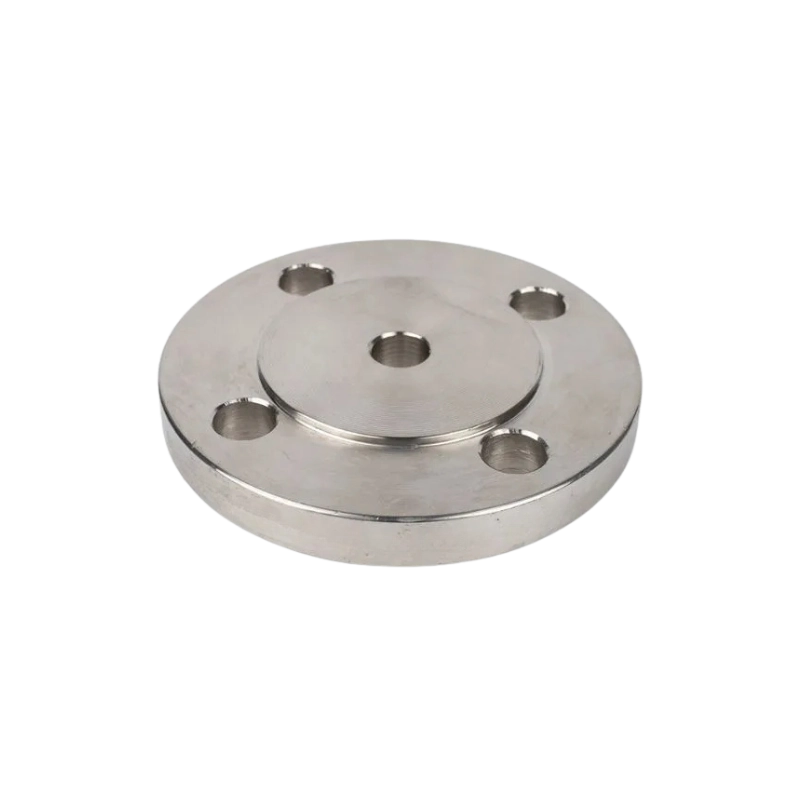
OEM Forging Spray Gun Parts Manufacturer
Your go-to partner for developing a forging spray gun. As an expert in metal forging, HDC offers forged spray gun parts with strength and precision.







Types of Spray Guns We Produce
HDC delivers all types of spray guns in the market, and can also be fabricated according to your unique design.

Air Spray Gun
An air spray gun is a pneumatic tool that uses compressed air to atomize the liquid and evenly spray it. At HDC, we fabricate parts for a variety of spray guns, including HVLP and LVLP.

Water Spray Gun
The water spray gun is widely used in gardens and landscaping. HDC offers customized options in materials, finishes, etc, to build your own model water spray gun.
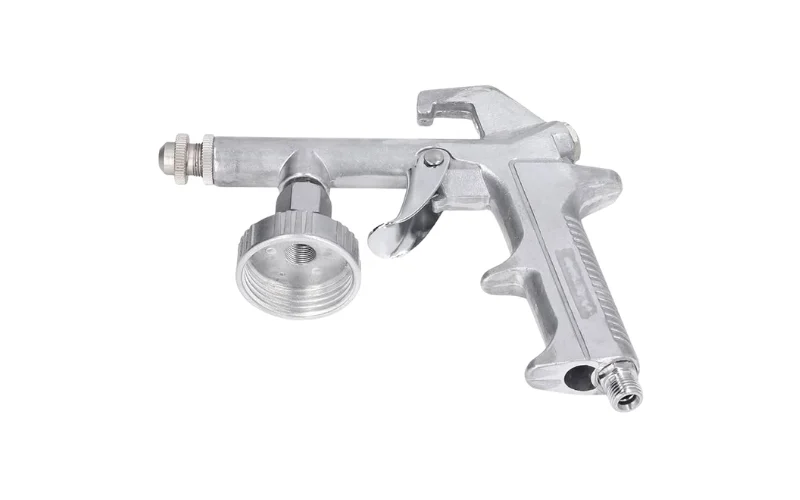
Paint Spray Gun
You have to consider whether the material of a paint spray gun can withstand the paint solvents. We provide aluminum and stainless steel to meet its requirements.
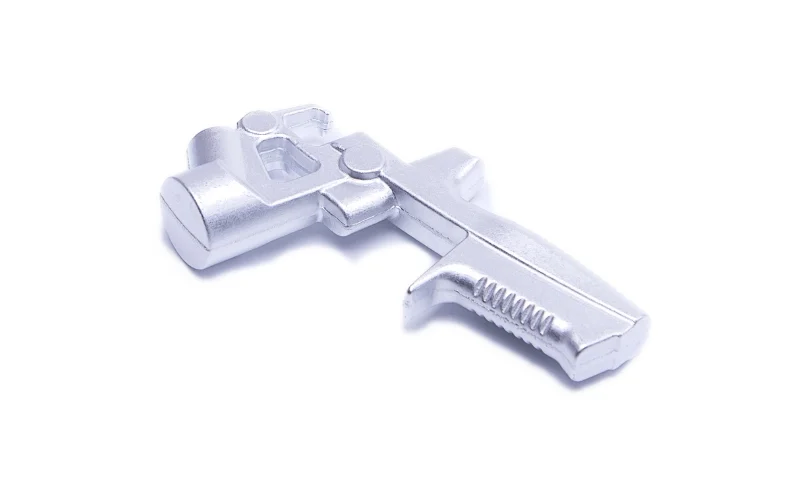
Chemical Spray Gun
When it comes to chemical spray guns, we are talking about pesticide and disinfectant sprayers. Our capabilities to forge with titanium can also help you with it.
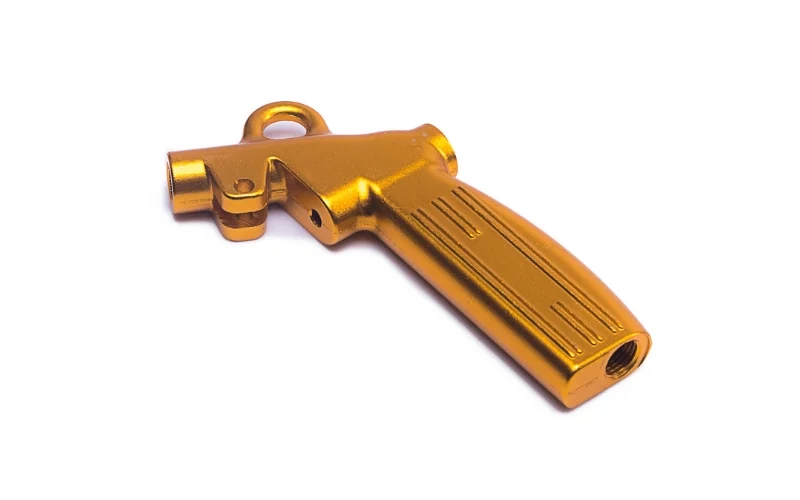
Air Blow Gun
Lightweight aluminum is the top choice for an air blow gun, cause it only works with compressed air, and you don’t have to worry about corrosive media.

Oil Spray Gun
Oil Spray Gun shares the same working principle as an air spray gun. It is designed to spray lubricating, cutting, or anti-rust oils evenly and efficiently.
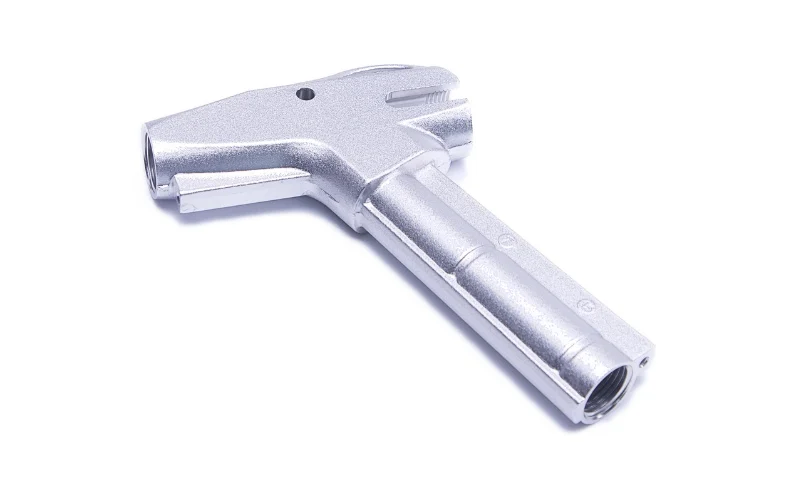
Foam Spray Gun
No matter what kind of “foam” your product is going to spray, cleaning solutions foam, or polyethylene foam, HDC can custom-build the spray gun for you without a doubt.
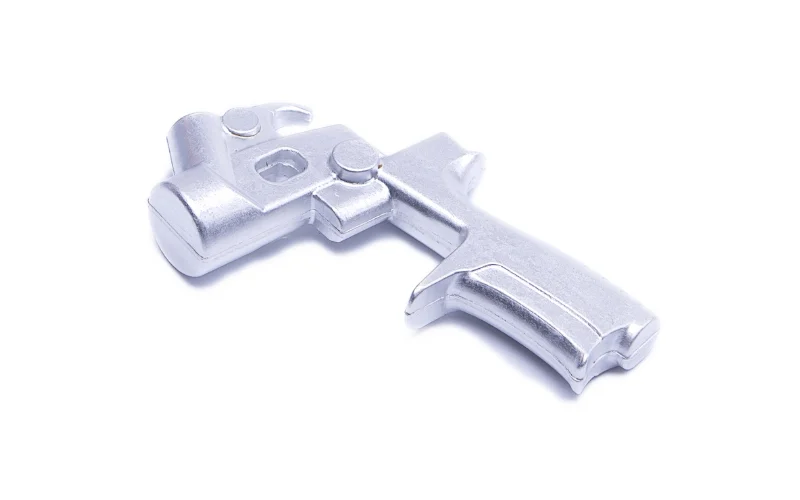
Sandblasting Gun
Sandblasting gun is also a type of pneumatic tool. It uses compressed air to propel sand at high speed to efficiently remove rust, paint, and scale, or creates a uniform matte texture on metal, glass, and stone.
Perché scegliere HDC
What HDC can do for your business? Here is the answer.

One Stop Customization Solution
HDC manufacturer forged spray gun parts from drawings or samples, backed by our full process capabilities from mold machining, forging, to CNC finishing.
Wide Range of Material Options
You can get all the materials used for a spray gun at HDC. Such as steel, aluminum, stainless steel, brass, and titanium. We have rich experience in forging these metals.
Mass Production Capabilities
With dozens of forging presses and the auto forging line equipped, we can produce your forging spray gun parts for over 10,000 pieces a month.
Fabbrica certificata ISO e IATF
As a factory certified to ISO and IATF standards, HDC follows strict quality control protocols to manufacture forgings for automotive, motorcycle, and custom parts for OEMs and manufacturers.
Materials You Can Choose From
Get a detailed look at what materials you can get for a spray gun at HDC.

Steel is a robust and cost-effective choice for forging spray guns if you ignore its weight beyond aluminum and titanium. It offers excellent strength and has rich grades to choose from, but may need additional surface finishes to enhance its corrosion resistance.
We offer a wide range of steel for your forging spray gun, including Q355B, Q235, 20#, 45#, 20Cr, e 40Cr.

If you are going to build a spray gun that is used with corrosive fluids, such as chemicals and seawater, then stainless steel is your go-to choice for its exceptional corrosion resistance in these working conditions.
At HDC, we forge stainless steel mainly in grades 304 and 316L. The 304 is usually used in consumer products that require moderate corrosion resistance in daily life scenarios. While the 316L is preferred in industrial applications, including the chemical and marine industries.
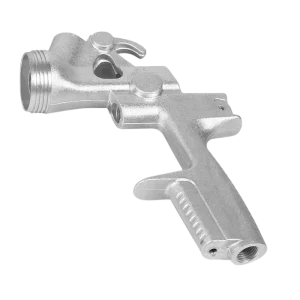
Aluminum is valued in forging spray gun parts due to its excellent strength-to-weight ratio. It’s easy to form by forging and solid to use, making it a common solution in lightweight matters spray guns, including water spray and air spray.
HDC provides standard 6061, 6063 aluminum, and aerospace-grade 7075 aluminum alloy to meet your performance requirments.

Titanium has the best strength-to-weight ratio among the metals we can forge. It has naturally high corrosion resistance against most corrosive media, including acid, alkali, seawater, and high temperature. But the material cost is times of aluminum and difficult to manufacture, so it’s primarily used in high-end spray guns.
HDC offers you the grade 2 and grade 5 titanium to build a customized spray gun based on your own design.
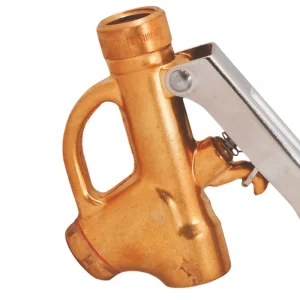
Brass is a classic metal for spray gun parts, such as the nozzle, connection coupler, etc. If you prefer, HDC can forge and machine the whole spray gun body using brass.
Finishes for Spray Gun Parts
Finishes are as important as the forging process. HDC offers a variety of surface finishes to perfect your spray gun.
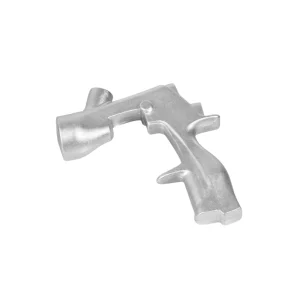
Sandblasting is a standard post-finish process for forged spray guns at HDC. It introduces compressed air to drive sand to impact the metal surface, removing the oxide layer and burrs caused by the forging process, meanwhile, forming a uniform mate surface for the following surface treatment.
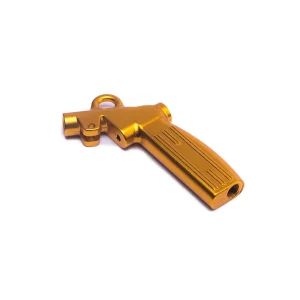
Anodizing is mainly a decorative surface treatment, primarily applied to aluminum and titanium spray guns. HDC provides both Type Ⅱ and Type Ⅲ anodizing, available in rich colors, including red, blue, purple, green, and even gradient colors.
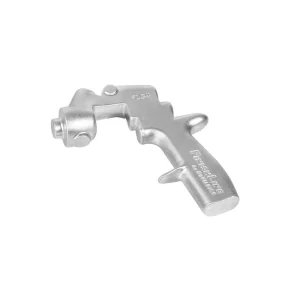
Electroplating can vary according to the metal being plated on, but the principle is the same: the plating metal is connected to the anode of the power supply, and the parts to be plated are connected to the cathode. Then dip both into the electrolyte, turn on the power, and in the circuit, some electrons of the plating metal will be forced to move from the anode to the cathode. Metal atoms that lose electrons become ions and dissolve in the electrolyte. Meanwhile, in the electrolyte, ions move towards the cathode due to the attraction of electrons. Finally, the ions deposited on the cathode, which is the metal to be plated, and took back its lost electrons, turning into a metal atom again. In the end, it forms a uniform metal coating on the parts.
HDC mainly provides zinc, chrome, and nickel plating for a spray gun.

Polishing can be applied as decorative or functional. It offers an attractive, shiny, smooth, and mirror-like surface.
HDC uses it to enhance the appearance and texture of the stainless steel spray gun or provide a smooth base for subsequent surface treatments such as plating, anodizing, and coating.
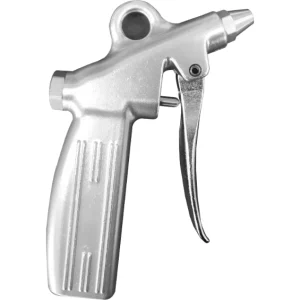
Passivation is mainly performed on our stainless steel spray gun to form a more stable and dense oxide layer on the surface.
Specifiche tecniche
Check in details about HDC‘s manufacturing capabilities, find out what we can do for your custom forging spray gun
| Forging Weight Range | 0.03 kg – 30 kg |
| Forging Press Capacity | 160T – 4000T |
| Diametro esterno (OD) | Up to 300 mm |
| Spessore del muro | 3 mm – 50 mm |
| Length / Overall Size | Up to 400 mm |
| Dimensional Tolerance (Forged) | ±0.5 mm – ±1.0 mm |
| Dimensional Tolerance (After Machining) | ±0.01 mm – ±0.05 mm |
| Thread Accuracy | Up to Class 3A/3B (ANSI) or ISO 6H |
| Rugosità superficiale (Ra) | Ra 0.8–3.2 μm |
| Trattamento termico | Quenching, Tempering, Annealing, Aging (Hardness: 20-60 HRC) |
| Ispezione di qualità | CMM, Spectrometer, Tensile Testing, Hardness Testing, Fluorescent Penetrant Inspection |
Why Use Close Die Forging for Spray Gun
Why do you need a forged spray gun instead of casting and CNC machining? Here is the answer.
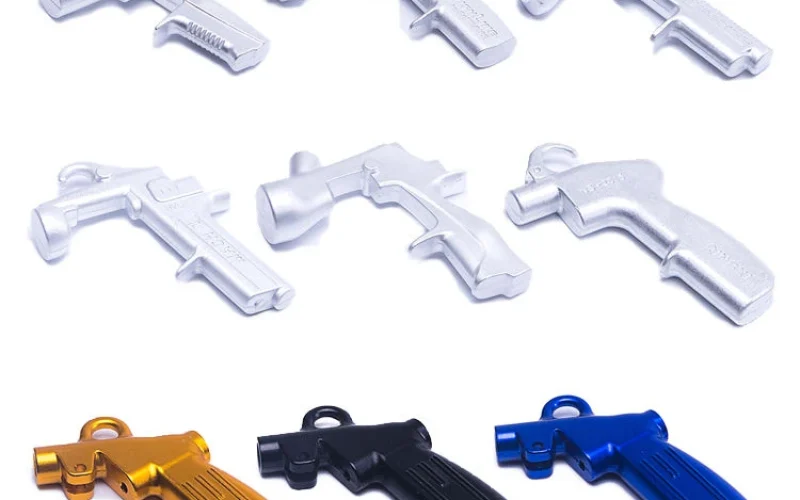
When it comes to developing a spray gun for your own brand, there are many aspects you need to consider. Here is a comprehensive list of the advantages of a forged spray gun for you to refer to.
- Better Material Efficiency: Forging can produce a near-net shape spray gun that requires minimal post-machining, effectively reducing material waste and, in turn, the cost.
- Higher Strength and Toughness: The Forged spray gun has a better grain structure than cast or CNC-machined parts, resulting in greater strength and toughness, making it a reliable tool for industrial applications, such as sand blasting guns.
- Faster Production Rate: If you are considering a large production run for spray gun parts, then forging is the ideal way you must consider, as it can forge a near-net shape billet in seconds.
How HDC Manufacture Spray Tool
You may be wondering how we fabricate your custom forging product. Here is the answer
As a factory certified by ISO 9001 and IATF 16949, HDC follows a standard protocol to forge your product.
- DFM Analysis: Our engineers review your 2D/3D drawings to optimize design for forging, ensuring proper material flow and cost efficiency.
- Mold Manufacturing: The mold is manufactured by our experienced technicians with in-house CNC machines, including 3-axis to 5-axis machines.
- Forgiatura: HDC uses chiudere lo stampaggio to fabricate your product. Equipped with forging presses and screw presses, we can offer both hot forging e cold forging as per the best practice.
- Trattamento termico: We apply heat treatment that is needed to refine the metal grain structure and enhance product performance.
- Finitura CNC: We provide precision finished spray gun parts that are ready to install or assemble. Forged billets are available if you require.
- Trattamento della superficie: We offer Various finishes, such as anodizing, sandblasting, or powder coating are available for enhanced protection and appearance.
- Ispezione: WE inspected final parts by CMM, hardness tester, and visual QC to ensure conformity to your specifications.
Need to build a product for your brand?
Contatta HDC e riceverai la soluzione completa più esperta che tu possa trovare per la forgiatura. Inviaci un'e-mail e il nostro preventivo è gratuito!
FAQ
What is close die forging?
Close die forging, also called impression die forging, shapes the heated metal between two dies that contain the desired form. This process gives your parts higher strength, better surface finish, and more accurate dimensions compared to casting.
What are the differences between hot forging and cold forging?
Hot forging is done at high temperature to improve plasticity and form complex shapes easily. Cold forging is performed at room temperature for better dimensional accuracy and surface finish. HDC can produce both, depending on your material and tolerance needs.
Can HDC suggest the best forging process for spray gun parts?
Yes. Our engineers analyze your drawings, materials, and application to recommend the most cost-effective and suitable forging process—hot, cold, or a combination with CNC finishing. We aim for the best balance of strength, precision, and cost.
What file formats does HDC need to provide a precise quote?
We accept 2D and 3D files such as STEP, STP, IGS, DWG, or PDF. A clear drawing with dimensions and material requirements helps us deliver an accurate quotation faster.
What spray gun parts does HDC produce?
HDC manufactures forged spray gun bodies, handles, air caps, connectors, and customized fittings. We can also produce your exclusive designs from samples or drawings, with full processes from mold machining to CNC finishing.
What are the types of air spray guns?
Common types include gravity feed, siphon feed, and pressure feed spray guns. Each has its own way to supply paint or coating, depending on application size and viscosity.
What is HVLP and LVLP spray gun?
HVLP (High Volume Low Pressure) guns use more air but lower pressure to reduce overspray and waste, ideal for fine finishes.
LVLP (Low Volume Low Pressure) guns use less air and work well with smaller compressors, offering good control for detailed jobs.
What are the differenece between external and internal mix spray gun?
In an external mix spray gun, air and liquid meet outside the nozzle, producing a wider and coarser spray—good for thicker coatings.
In an internal mix spray gun, air and liquid combine inside the nozzle, creating a finer, more uniform atomization suitable for precision work.
prodotti correlati


